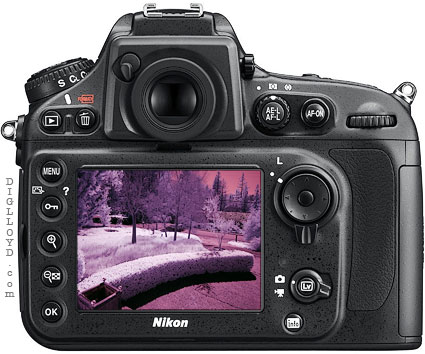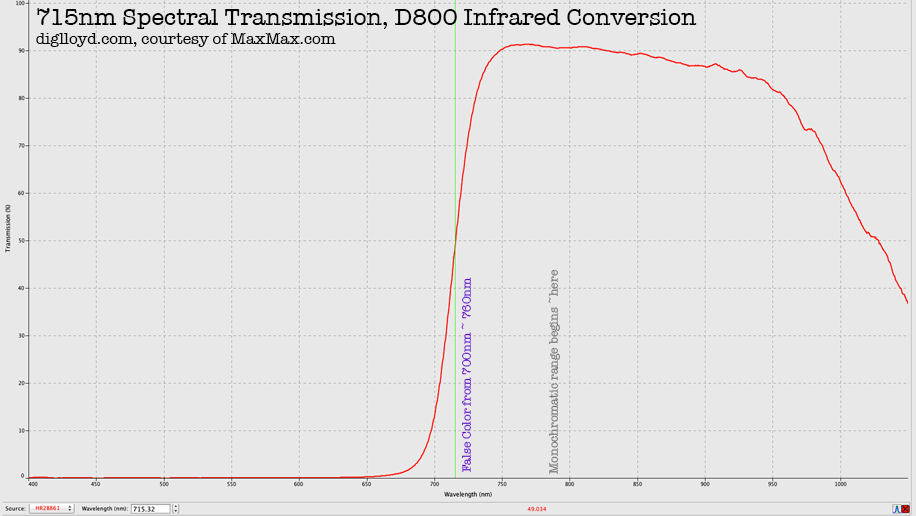Nikon D800 Infrared Camera from MaxMax.com, 715nm Cutoff
Courtesy of MaxMax.com, I have a Nikon D800-IR on the way:
- The sensor cover glass is removed and replaced with new glass of appropriate thickness that passes infrared and blocks visible light.
- The modified camera now “sees” only infrared light starting at around 715nm.
- Any and all lenses can be used.
See the diglloyd Guide to Digital Infrared for the various issues that arise with infrared in general, including lens performance, spectral transmission and IR hot spots and flare.
One lens that is superb in infrared is the Coastal Optics 60mm f/4 UV-VIS-IR APO-Macro, and I also have the special Zeiss 25mm f/2.8 IR-Distagon.
The internal IR-cut filter over the sensor has the characteristics shown below.
The human eye can actually see dimly out to ~900nm (possibly even farther, albeit very dimly), a fact which can be determined by looking directly into an infrared LED in a dark room.
Infrared photography properly begins around 715nm, with the range of 715-760nm affording “false color”: the R/G/B photosites respond differently to infrared light (differential transmission). Starting around 760nm, all of the R/G/B photosites go transparent to infrared, thus the image becomes pure monochrome (the photosites all see the same luminance).
Lincoln C writes:
I view your site every day and learn a lot from your experience and insight.
When I got my first camera converted to IR, a Canon D20, I got a good start in IR photography using your Guide to Digital Infrared Photography. Since then I have had a Canon 5D, a Canon 5D MKII, and now a Sigma DP2M. I've always used the 830nm IR filter.
The MKII was excellent, especially using Live View for manual focus and L f4 lenses which seemed to be hot spot free at all apertures. Here are some IR/Monochrome Studies taken in NYC last summer: <omitted>
Recently, I asked MaxMax to do the same conversion on a Sigma DP2M. This was their first attempt on this camera. Turned out a 830nm filter was not available in the right thickness so they replaced the IR/UV filter with a clear optical window of the correct thickness so that the auto focus would work correctly. The idea was to use on-the-lens filters for both IR and color images. A 830nm IR filter produced hotspots at all apertures. However, a 720nm IR filter works beautifully, producing no hot spots and good B&W conversions. See: <omitted>
Finding a 49mm standard IR/UV filter for color work has proven more difficult. At this point I'm using a CC1 filter from MaxMax that is 52mm with a step down ring to 49mm.This does not allow the lens hood to be used. Moreover, the IR/UV correction is a bit different than the original filter which requires a custom white balance and white balance tweaking in post processing. Still I've got an IR camera and a color camera in the same package.
I must say that Dan Llewellyn at MaxMax is willing to work with his customers and produces excellent camera conversions.
Thanks again for your site!
DIGLLOYD: the infrared images from the Sigma DP2 Merrill almost make me want to convert mine!






























